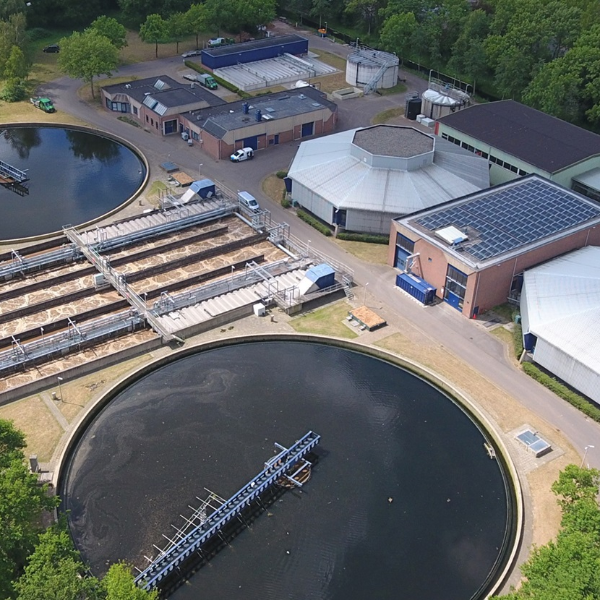HDSR’s Water Purification Vision for 2050
Towards a sustainable construction and renovation strategy

HDSR’s Water Purification Vision for 2050
Hoogheemraadschap De Stichtse Rijnlanden (HDSR), a water authority in the province of Utrecht, aims to extract more value from the water chain and to make it as sustainable as possible. The water authority has formalised this ambition in its Water Purification Vision for 2050. The sustainability measures encompass various aspects, including the water chain and construction/asset management. For the second of these two domains, we supported the water authority during the process of defining and integrating sustainability, circularity and climate change adaptation into their projects, so that HDSR can achieve its sustainable goals by 2050.
HDSR developed the Water Purification Vision to address several major challenges. For example, the commitment to the Climate and Raw Materials Agreement (Klimaat- en Grondstoffenakkoord) obliges the water authority to achieve fully net zero operations by 2050.
The water authority has divided the Water Purification Vision into three priorities: making more optimal use of wastewater, extracting value from the water chain (reuse of waste heat and raw materials) and adopting a new approach to the design, construction and renovation of its assets. We supported the water authority during the development of the third priority.
Construction philosophy
Together with the water authority, we asked ourselves the following question: ‘how can the organisation design, construct and renovate in line with the objectives for 2050?’ In this project, our goal was to develop specific proposals for HDSR by jointly identifying the existing products that must be delivered during each project phase.
Together with the technical managers, engagement and stakeholder managers, contract managers, design leads, administrators and sustainability advisers at HDSR, we added sustainable standards to the existing products in each project phase.
In our Sustainable Project Plan, we developed toolboxes for each of the five project phases: initiation, exploratory study, plan development, construction and aftercare. The existing products are specified for each phase, along with several sustainability-related aspects: climate change adaptation strategies, circular construction and management standards and reducing the impact on the climate to become net zero.

Climate change adaptation strategies
The effects of climate change are generally divided into four categories: water issues, drought, heat and flooding. Measures can be implemented to reduce the impact of each of these effects. For example, local water issues can be prevented by increasing the infiltration capacity. In the plan development phase, this means that specific measures such as infiltration wells must be included in the preliminary design.
Because the climate change adaptation strategies and their implementation are specified for each project phase (e.g., plan development) and product (e.g., preliminary design), they can immediately be used in HDSR’s existing projects.
Circular, net zero
The circular and net zero approaches are inseparably linked in HDSR’s construction philosophy. The objective of circularity is to keep (raw) materials in the system for as long as possible and to minimise waste. Net zero means reducing greenhouse gas emissions.
The construction philosophy integrates circular strategies into the products in every phase, including reuse and reduced used of primary raw materials. One example is the introduction of reuse scans of existing assets during the exploratory study phase, to allow elements and materials to be reused in new designs. The obligation to carry out a reuse scan can be included in the programme of requirements.
One example of the net zero approach in the construction philosophy is including a circular/net zero adviser in the project team. This adviser’s responsibilities during the construction phase include assessing the MEAT (Most Economically Advantageous Tender) commitments for the type of fuel used for equipment, for example by checking whether HVO100 or electric equipment is used if this was agreed.
Leeway
The challenge for our experts and the members of the project teams is to make sustainable criteria measurable (SMART), so that internal and external clients can use them in their project strategies. However, there must also be leeway for contractors. This demands a degree of flexibility in the product specifications, particularly as changing circumstances may necessitate changes.
Because we developed the specifications for the products and standards with HDSR and in partnership with the project team members, rather than for them, the final construction philosophy has broad support within the organisation, where it will be adopted and taken further.
More information?
